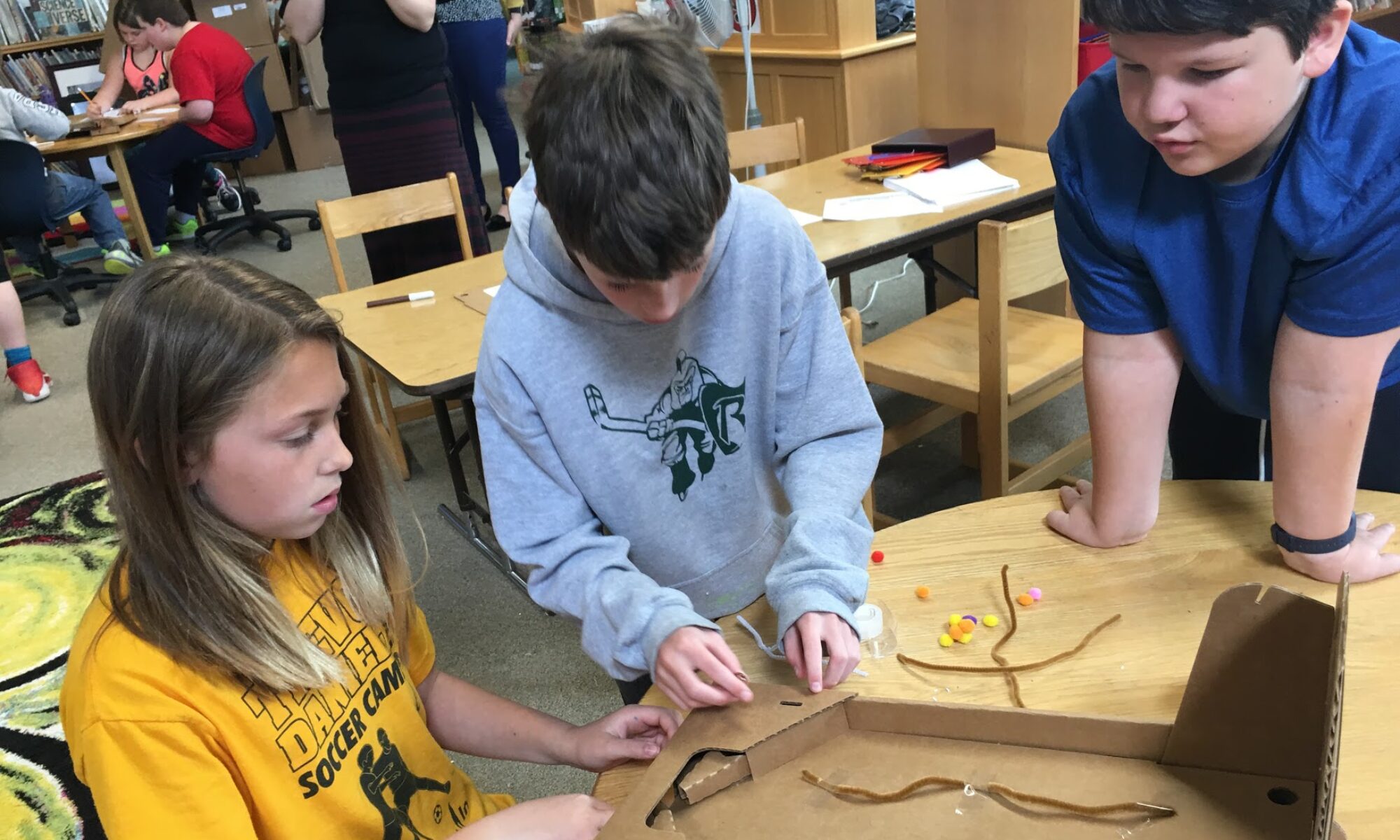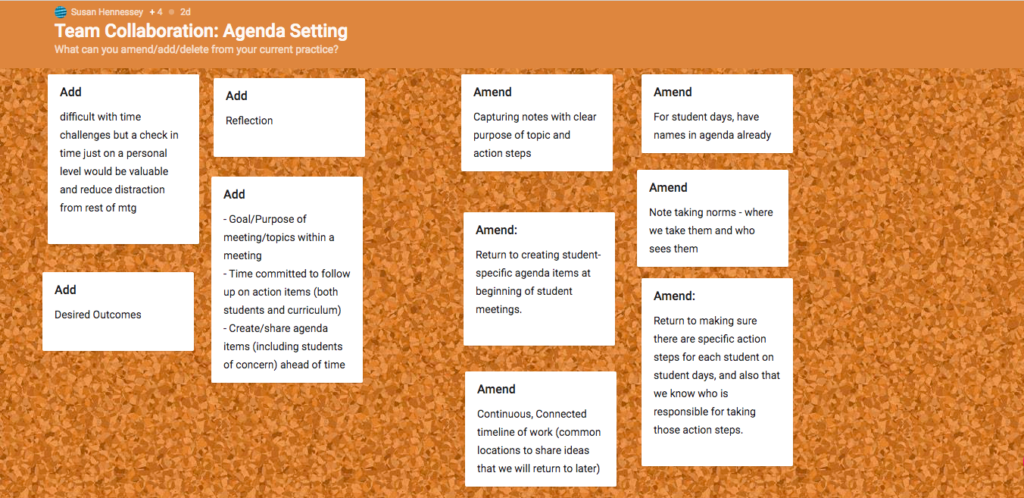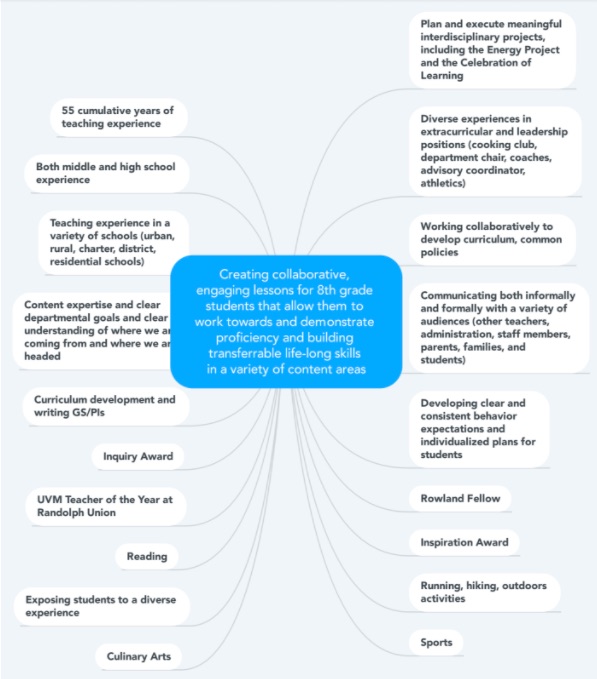5 exercises your team can try today
 School is off to a rollicking start thanks to you and your team’s efforts to build a collaborative culture. You’ve made it successfully through in-service days and the first few weeks of school. Now how are you and your team going to maintain your momentum?
School is off to a rollicking start thanks to you and your team’s efforts to build a collaborative culture. You’ve made it successfully through in-service days and the first few weeks of school. Now how are you and your team going to maintain your momentum?
Here are five exercises for maintaining a healthy, happy, respectful and celebratory teaching team.
Team maintenance: tasks & activities

Norms for routines, decision-making, and documentation were reviewed in your first or second meeting (if not, start here: Norms Construction: A Process of Negotiation ), but often those tend to live in a neglected Google Doc. Much like what can easily happen to our mission statements or syllabi or rubrics, the norms are introduced once and then never revisited.
How do teams commit to keeping them alive and in service to the hard work we do together? Better yet, how can we use them to work together both efficiently and joyfully?
To take a real stab at answering these questions, we suggest you schedule five team meetings throughout the year. At each one, commit to devoting 20 to 30 minutes to team maintenance.
1. Diagnostics: self-assessment tools
Ask team members to complete this Teacher Self Assessment , before the meeting begins. This way, everyone is prepared to debrief during the meeting. Time-saving tips ftw! One easy way to streamline the sharing process is to turn the assessment into a short google form. That way, you can look at the aggregated results. What trends do you see?
Start the meeting together by watching this ice-breaker video:
Then, look at the results of the assessment together. Review how the team makes decisions. Finally, use the Action Steps part of the chart to commit to improvements if necessary, and celebrations if not.
2.Meeting Structure: The power and pleasure of a strong agenda
Once you have a few team meetings under your belt, look at how agendas are created, shared, and acted upon. Ask yourself how and with whom do we team? Take five minutes for each team member to review these three agenda templates.
- Progress Team Agenda – Stowe Middle School, Stowe VT
- Peoples Academy Middle Level Faculty Agenda – PAML, Morrisville VT
- The template our team uses: Tarrant Institute for Innovative Education – University of Vermont
While reviewing them, consider:
- What do you see as threads (i.e. all have places to take notes)?
- What are you curious about?
- Write down one item/idea you would recommend amending, adding, or deleting from your current practice
Teams can use a Padlet to collect the recommended amend/add/delete items.
One team member facilitates the discussion by reading the item/idea aloud, allowing for quick clarification if needed. Then each member votes thumbs up or down. End the meeting with an agreement that the decisions made will inform the agenda-building for the very next meeting. Be sure to build in five minutes at the end to debrief the process and make adjustments if necessary.
3. Create a means for all voices to be heard
Build in ways for all members to share. Here are three ways you might adopt to be certain each member gets a chance to contribute:
- Begin each meeting by allotting time for:
- each member to share a Rose and Thorn or a Celebration and Challenge.
- each member to share answers to a compelling question in writing using a tool like Answer Garden, Padlet, or Todaysmeet (allowing those who tend to be more quiet/reserved to share along side our more loquacious/boisterous colleagues).
- members to sign up in advance (one per meeting) to share one new strategy, or tech tool, or assessment they’ve recently tried.
4. Build a collaborative team résumé
For some of us, it’s been years since we’ve been tasked with capturing on paper who we are and what what skills, dispositions, and talents we can offer. Other, newer members to the profession or those of us who have had the opportunity for multiple job searching efforts, know how the resume writing effort focuses us what we see as most important, provides focus, and allows us to celebrate our strengths.
The same benefits can be felt when, as a team, you take on the challenge of creating a team résumé. It’s relatively simple. Set the timer for 20 minutes, open a Google Doc, and start. If you can manage it, invite a non-team member to observe, take notes about the process, and share observations at the end of the 20 minute challenge.
Check out what Randolph Union Middle/High School’s Eighth Grade Team was able to produce when they recently took on the challenge:
We tend as teachers to be a humble lot. But we can use this activity to celebrate talents, awards, recognitions, and interesting skills that might otherwise remain hidden.
5. Take a risk: do something together as a team you are asking your students to do.
Commit to revisiting the results of your Team Self Assessment tool. This is not a linear process but rather a spiraling, iterative commitment to team maintenance. Where do you see growth? What has stagnated? What should be celebrated or ditched? Use some of the great resources from this Collaborative Team Toolkit as you continue to grow.
We ask our students to meet proficiencies, track growth over time, and reflect on artifacts and evidence of that growth. Let’s adopt the same standard of behavior for our own team work.
What does your teaching team maintenance look like?




